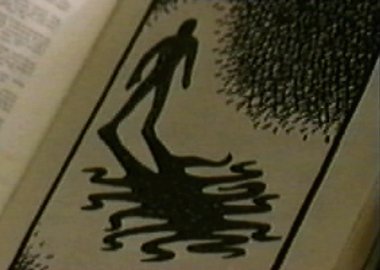It's a Small, Vampiric World, After All
Throughout history many different cultures have had a common theme to their myths and legends. Monsters seem to have a similar nature no matter if they arise in the jungles of South America or the plains of Siberia. They all possess a singular gift of evil that pervades their makeup regardless of their origins. But although their monstrous genes may be from the same supernatural DNA, the differences in their appearance or attitudes can be used by a willing observer to shed new light on other theories. Like a botanist who can superimpose the behavior of one genus of flower on another, the student of worldwide myths can extract a greater truth from these far-flung siblings that helps to neatly tie together these common themes.
Take the vampire for example. Stories of vampires and vampiric creatures exist all over the world. From the Ekimmu of ancient Babylon to the Mexican Cihuateteo, no other legend seems to be as persuasive as that of a creature that preys on humans. Although European legends tend to make this monster a blood sucker, other cultures have vampires which deal with more esoteric matters of the human psyche. A Polynesian monster called the Talamaur thrives by stealing "life force" of dying men. The Indonesian Pontianak is said to be less interested in blood and will actual steal men's masculinity if it is successful in it's seducement. Regardless of origin these vampiric creatures stay true to their roots. They prey on humans and feed on us like we would feed on lesser animals. Indeed a common theme to vampire myths seems to be that we ARE cattle to these creatures. That the human race is simply a source of food for these creatures who seem to be higher up on the evolutionary scale than us.
One of the most interesting examples of lesser-known vampire myths comes out of the Philippines. For many years the natives of these islands have spoken in quiet voices of a vampiric creature called the "Tatagong." The Tatagong differs in some respects from most vampires in that it has no substantial body. Instead it can only be seen as a shadow and, instead of being able to move on its own, it requires a host to carry it from one place to another. The Tatagong acts much like a parasite in this respect, latching onto a human's shadow and using it as a shield against detection. Its human host is said to be aware of the infestation but is unable to do anything about it and is instead somehow commanded to seek out other humans for the Tatagong when it needs to feed. Instead of sucking blood the Tatagong sucks at the "life essence" of these other humans, killing them in the process. It is only at this point, when it is cleared of it's host's shadow, that it can be seen by others. It is also reported that this is the only time that the Tatagong can be captured and its host can be rid of the infestation. Capture seems to be the only option with a Tatagong; no record exists on how to kill it.
But what are the origins of this peculiar monster? Belief in this creature can be traced back as early as the early 16th century where it is possibly mentioned in the notes of Antonio Pigafetta who was the chronicler of Magellan's expedition across the world.
"We strayed not far from the village after the Islanders made it known that there
existed creatures on other islands that would not take lightly to being disturbed.
When we tried to get porters for a trip elsewhere in the chain we were met with
wide eyes and shaken heads. The village leader used drawings and signs to
explain of the evil that walked the other islands. An evil that used men to whet it's hunger."
The Jesuit historian Pedro Chano who visited the Philippine islands in the years 1608 through 1610 and learned the native language of Tagalog recorded a clearer report of this "evil". He wrote of his experiences when he returned to his native Spain in 1621 in the book "La Gente De Las Islas."
"The numerous islands are host to a surprisingly peaceful group of natives who have accomplished themselves in many ways. They have developed the skill of writing and use small knives to record events on specially prepared bamboo paper. I was honored by the local chief and let to examine several such documents but since I could not read the language as of yet I asked for him to read one such scroll to me. The Chief acquiesced and related a tale to me that I still find chilling in it's Godlessness today.
It concerned a village deep in the heart of the thick jungle where no living man dare go. This village only appears at night and there is a full moon forever over the place. Inside the village live spirits and shadows of things that look like men but are not. These shadows spend their time in wait for a man to pass by and then attack them as a bloodtick would place itself on a cow. These creatures will then use the man as a beast of burden, taking it to other men where it will attack them and steal their soul. In this way it feeds on men. The scroll recorded the events of one such possession and stated that the attack was finally ended when the possessed man was burned alive during an attempt to capture the beast.
I thanked the Chief for the reading but hid my true thoughts from him since the tale had chilled me to the depths of my soul. Surely these people are in need of the Lord's guidance to lead them away from such ungodly thoughts and ideas. I believe there is much work to be done here."

Efforts by such Europeans as the Jesuits and others to "westernize" the Philippines worked to a certain degree. Although the Filipino's embraced the Catholic Church readily, it seems that the native beliefs lay dormant just underneath the new social and religious values juxtaposed over the Islands. Belief in the Tatagong and other native monsters has been kept alive and survive even to the present day. The evidence of oral histories could explain reasons for the continuation of these beliefs away but it might be a bit presumptuous to put all explanations neatly into this category. Could it also be possible that the beliefs were continued because of the simple fact that they are true? On the surface such an assertion would seem preposterous but some facts seem to support this hypothesis. Take for example this peculiar event that happened during World War II.
On December 15th the United States military retook the small Philippine island of Mindoro from the Japanese to use as a base to launch attacks against the bigger islands the Japanese still held. Resistance on the island was light and by Dec. 17th the US Army Corp of Engineers had been tasked to build several airfields on the island. In the days that followed 5 deaths of were recorded in Army logs and were classified as "enemy actions" even though the Marines had been over the island beforehand and had pronounced it cleared of all Japanese soldiers. Then just mysteriously as the deaths had occurred they stopped. The army record ends there but in the book, "Taking Back the Islands; a journal of the retaking of the Philippines Islands." I found what might be an explanation of the story. Sgt. Roger Edwards, who was an engineer on Mindoro, wrote of what he encountered.
"By Dec 16th we were all out in the thick jungle mess, hacking and slashing with everything from machetes and flamethrowers to bulldozers. It was a real rush job so it became a round the clock operation and my unit was given the graveyard shift. We weren't really that concerned about getting attacked since we were told the island had been cleared out and the kamikazes were after the bigger fish sitting off shore. That's one reason everybody was so surprised when we learned at our midnight lunch that 2 guys from our unit had been killed. The buck private that found them was scared out of his mind and kept claiming that there weren't any wounds on the guys. We thought it was just him getting a case of the jitters but we all started keeping our weapons closer after that.
Around 4 am there was a shout, and some gunfire over by the edge of the woods where the dozers were working carting off the felled trees. We ran over there and sure enough the dozer operator was laying there dead, slumped over his steering wheel. His pistol was still resting in his hands with 2 rounds missing but there wasn't a mark on him. The boys starting jabbering a lot of bullshit about how the Japanese were on the island and had some kind of nerve gas weapon set up but I personally didn't believe a word of it. We set up a quick perimeter but none of us were too keen on clomping off in that jungle in the middle of the night so the Lieutenant did the smart thing and radioed our problem back to the Marines. A squad of those hard asses came on shore about at about 1800 on the 17th just as we were getting off our shift. By the looks they gave us it was clear they thought we were crying wolf at nothing but I was happy to have them there.
I was happier still when we got back to the job that evening and learned that nobody had been killed. That feeling left me real quick around 9pm when we heard shooting coming from the edge of the jungle. A quick recon by the marines near us revealed that 2 of their fellow jarheads were just as dead as the engineers from the day before. And once again there wasn't a mark on them.

A Filipino strong box made to hold the shadow vampire?
|
That's when the situation got real peculiar cause the Filipino attaché had a conversation away from the rest of us with the Marine lieutenant he was working for. Whatever he said had some kind of effect cause the lieutenant detached a Marine to go with him to the other side of the island where a little Filipino shantytown was. We all broke for another meal and by the time we were finished the attaché was back with this old guy from the village who looked about half dead from starvation. He seemed real keen to see us though and kept patting this ragged pack on his back and mumbling to us in Filipino.
I wasn't sure what was going on but the Marine lieutenant told us to stay on break and then tromped off into the woods with the 2 native guys and a can of diesel fuel under his arm. About 30 minutes later we saw there was a big fire out by the edge of the jungle break and then about 10 minutes after that there was a single gun shot. We rushed over there (letting the Marines go in front, mind you) and were surprised to see a Japanese soldier lying there in front of the fire with a bullet in his head. The old native guy was saying something as he trounced around the fire and he was holding this wooden box that must have come out of his pack. The lieutenant holstered his pistol and told us that the Jap had been hiding in the jungle and that the danger was over and we could get back to work. The Filipino attaché translated that to the old man who smiled, nodded and patted the wood box in his hands. After that the attaché took the old man away, back to his village I guess, and left us there to get back to work. The lieutenant never did say what that native guy was up to and no one had a good explanation how a single Japanese soldier could have killed 5 of us. Even stranger was the fact that the Japanese soldier didn't even have a rifle on him when the lieutenant shot him."
Does this story relate another encounter with the Filipino vampire called the Tatagong? A clue that it does might be the box that the native carried away from the encounter. The legends associated with the monster relate that only a skilled Priest of the ancient Malayan religions can hope to release a man who has become a parasitic host to the beast. It is said that through the use of light and shadow the Priest can attract the monster and then capture it in a strong box when it attempts to strike. This box must then be kept in a secure place because the shadow vampire never dies, it just lies in wait for it's release.
And what's my take on this tale of a strange vampire who possesses no material body? As I'm sure you are aware, I'm not one to dismiss claims of the paranormal and this one has a special reason to hold my interest. Indeed this entry has served the double purpose of educating you while giving me a sense that recent events I have experienced aren't totally unknown to the rest of the world. I can't go into the specifics but I can show you a sample of what I have been up to. The QuickTime below was made from a videotape I acquired and it may be the first direct evidence of the Tatagong ever seen by western eyes. I'm presenting it here for you to view for yourself. Does a colony of vampiric shadows lie in wait in some deserted Filipino village? You be the judge.
sources
Vampires
http://www.h2g2.com/A273566
Antonio Pigafetta, Magellan's Voyage around the World, vol. 1, translated and edited by Sarah McGoghland, Grover Oaks Publishing, 1934
Pedro Chano La Gente De Las Islas translated from the original manuscripts by Ferdinand Norbatkins, Spanish Legacy Editions, 1976
Thomas Smithson Philippine Myths and Legends Manila Bay Publishers, 1994
Roger Edwards Personal Account from the book Taking Back the Islands; A Journal of the Retaking of the Philippines Islands Military Press, 1981
|








